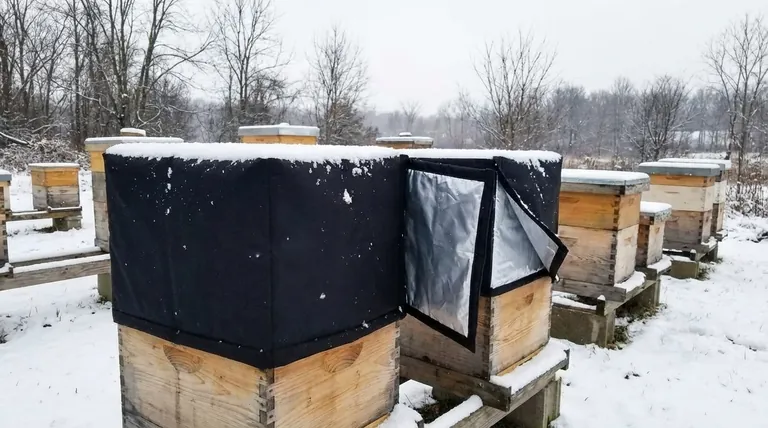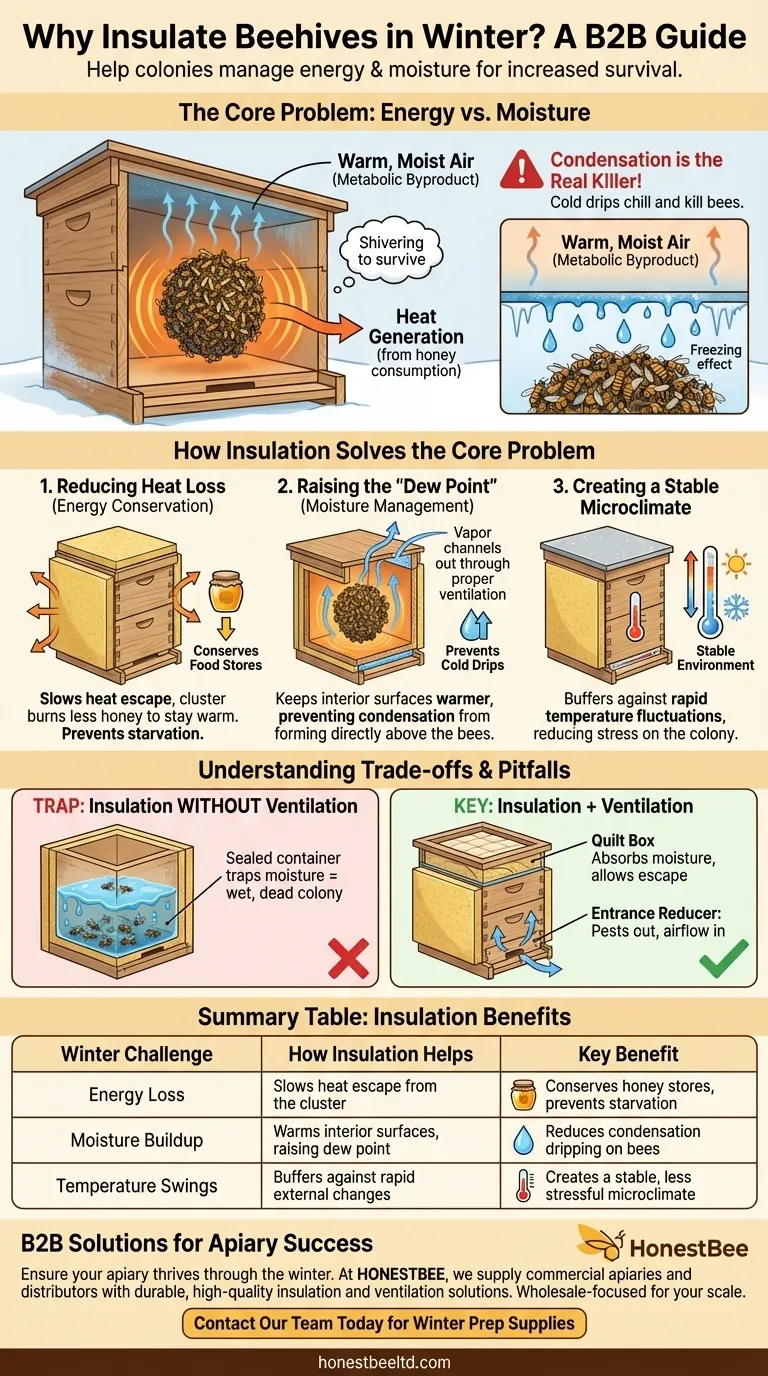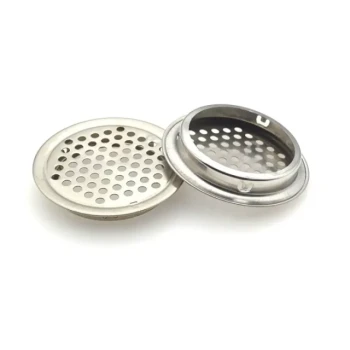The primary reason to insulate beehives is to help the colony manage energy and moisture throughout the winter. Proper insulation reduces the amount of honey the bees must consume to stay warm, preventing starvation and mitigating the lethal effects of internal condensation. This simple step significantly increases the odds of a colony's survival.
The goal of winter insulation is not to heat the hive, but to stabilize the internal environment. By slowing heat loss and managing moisture, you reduce the two greatest stressors on a wintering colony: starvation and condensation.

The Core Problem: Energy vs. Moisture
To understand the role of insulation, you first have to understand the twin challenges a honeybee colony faces in winter. They must generate enough heat to survive while simultaneously dealing with the metabolic byproduct of that heat generation: water vapor.
How Bees Generate Heat
Bees do not heat the entire hive cavity. Instead, they form a tight winter cluster and generate heat at its core by vibrating their wing muscles, essentially "shivering." The outer bees act as a living layer of insulation for the bees inside. To fuel this activity, they consume their stored honey.
The Double-Edged Sword of Metabolism
As bees consume honey, their metabolism releases heat, carbon dioxide, and a significant amount of water vapor. While the heat is essential, this warm, moist air rises from the cluster.
Why Condensation is the Real Killer
When this warm, moist air hits the cold inner surfaces of the hive (the inner cover and upper walls), it condenses into water droplets. This cold water can then drip down onto the cluster, chilling the bees. Wet bees quickly die from exposure, making condensation a far greater threat than the external temperature alone.
How Insulation Solves the Core Problem
Insulation works by addressing both the energy and moisture sides of the winter survival equation. It creates a more stable, less demanding microclimate inside the hive.
Reducing Heat Loss (Energy Conservation)
Insulation, typically in the form of rigid foam boards, slows the rate at which heat escapes the hive. This means the cluster's radiant heat is better contained, and they have to burn less honey to maintain their core temperature. This conserves vital food stores, which is especially critical for colonies with limited reserves.
Raising the "Dew Point" (Moisture Management)
This is the most critical and often misunderstood benefit. By insulating the hive, you keep the interior surfaces warmer. When the inner cover and walls are no longer frigidly cold, the rising water vapor is less likely to condense directly above the bees. Instead, it can remain as vapor and be channeled out through proper ventilation.
Creating a Stable Microclimate
Insulation acts as a buffer against rapid temperature fluctuations. This stability reduces stress on the colony, allowing them to regulate their cluster size and temperature more efficiently without drastic, energy-intensive adjustments.
Understanding the Trade-offs and Pitfalls
Applying insulation correctly is crucial. Simply wrapping a hive without considering the consequences can do more harm than good.
Insulation Without Ventilation is a Trap
The single biggest mistake is to insulate a hive so well that you cut off all air exchange. This creates a sealed container that traps moisture, guaranteeing condensation and a wet, dead colony. Insulation and ventilation must work together.
The Critical Role of Ventilation
You must provide a way for the moist air to escape. This is typically achieved with an upper entrance or a dedicated quilt box. A quilt box is a shallow box filled with wood shavings placed at the top of the hive to absorb moisture and allow it to escape, preventing it from condensing inside.
Don't Block the Main Entrance
The main entrance at the bottom of the hive should never be fully blocked. Bees need it for cleansing flights on warmer winter days to defecate. Use an entrance reducer to keep pests out and minimize drafts while still allowing access.
Making the Right Choice for Your Colony
Your approach to insulation should be guided by your climate and your colony's specific condition.
- If your primary focus is conserving limited food stores: Insulation is critical. Reducing heat loss directly translates to less honey consumption, which could be the difference between survival and starvation.
- If your primary focus is managing moisture in a damp climate: Prioritize ventilation. A quilt box combined with moderate insulation is often the most effective strategy to keep the colony dry.
- If your primary focus is buffering extreme temperature swings: Use a combination of insulation and a moisture-absorbing quilt box to create the most stable internal environment possible.
Ultimately, by properly insulating and ventilating your hives, you are supporting the colony's natural ability to survive the harshest season.
Summary Table:
| Winter Challenge | How Insulation Helps | Key Benefit |
|---|---|---|
| Energy Loss | Slows heat escape from the cluster | Conserves honey stores, prevents starvation |
| Moisture Buildup | Warms interior surfaces, raising the dew point | Reduces condensation dripping on the bees |
| Temperature Swings | Buffers against rapid external changes | Creates a stable, less stressful microclimate |
Ensure your apiary thrives through the winter. Proper insulation is a cornerstone of successful beekeeping. At HONESTBEE, we supply commercial apiaries and equipment distributors with the durable, high-quality insulation and ventilation solutions needed to protect your investment. Our wholesale-focused operations are designed to support your scale. Let's discuss your winter prep needs — contact our team today to get the right supplies for a successful season.
Visual Guide

Related Products
- Professional Insulated Winter Hive Wrap for Beekeeping
- Inner Beehive Cover for Beekeeping Bee Hive Inner Cover
- Stainless Steel Round Beehive Air Vents for Ventilation
- Professional Drop-Style Hive Handles for Beekeeping
- Long Langstroth Style Horizontal Top Bar Hive for Wholesale
People Also Ask
- Is it always necessary to insulate beehives? A Guide to Winter Survival & Colony Health
- What is the advantage of an insulated outer cover? Boost Winter Survival & Spring Buildup
- What are the benefits of insulated beehives in cold weather? Boost Winter Survival & Spring Productivity
- What are the steps to properly wrap a beehive for winter? Ensure Your Colony Survives the Cold
- Should bee hives be insulated? Protect Your Colony from Moisture, Not Just Cold



















